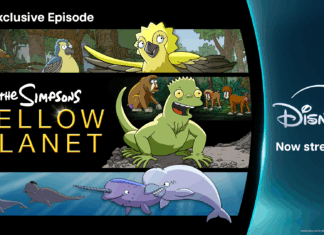Captain Jack is back in “On Stranger Tides,” the fourth entry in the wildly popular Pirates of the Caribbean franchise. While this might not be the best film in the series, Johnny Depp’s portrayal of the iconic character once again makes this a film worth seeing. In telling the story of a three-way race for the Fountain of Youth between the Spanish, the British and the infamous Blackbeard, the filmmakers have crafted a rarity; an adventure film for the entire family.
I know there’s been a growing animosity towards these films, but I just can’t understand why. They might not have the most intelligent scripts, but these movies are really fun. I mean, how can you not love a film featuring killer mermaids, zombies, swordfights, etc? This is the type of movie I used to dream about as a child. Having said that, the story is a little convoluted, with the ability to find the Fountain resembling a scavenger hunt of the supernatural.
Part of this hunt includes the quest for a mermaid’s tear, leading to one of the most exciting action sequences in the franchise. While I thoroughly enjoyed the film, I have to admit that director Rob Marshall didn’t bring much of his personality to the footage on screen. However, he seems to have been inspired by the potential in the mermaid sequence, showcasing several beautiful shots and masterfully edited action cues. The film is worth seeing for this sequence alone.
The franchise frequently references the original Disney attraction on which the story is based. One of my favorite visuals from the ride is the skeleton reading the map in his bed. I was particularly impressed with the way they incorporated that image into the film, not treating it as a throw-away reference, but actually making it an integral sequence in the plot. As I mentioned above, this is a convoluted story, but moments like this stand out for pure creativity.
There’s always a danger of losing that creative edge by the time you hit the fourth film in a franchise. I don’t believe Depp is anywhere near that point. He obviously loves this character, and I have a feeling, we’ll be seeing him for years to come. As long as they can maintain the level of quality on display here, I’m just fine with that. However, I have every other Pirates film on disc, and I was shocked at just how poor this release fares compared to the rest. With movies like this, set in a fantastical world that must be created from scratch, you can usually expect some pretty elabore making-of features. Not so in this case.
The best feature is Disney Second Screen. This is a way of syncing the film up with your computer or IPad and watching bonus features in conjunction with the film. It’s a really clever way of avoiding the Picture-In-Picture method of bonus features that are so popular right now. There is also an audio commentary track with Rob Marshall and the Executive Producer, John DeLuca. Rounding out the extras are a very generic blooper reel, and a series of five animated Lego shorts featuring Captain Jack. These are called “Captain Jack’s Brick Tales,” and they average slightly over a minute each.
That’s all the extras! At least the film looks and sounds great. Featuring a relatively muted color pallette, I was afraid that the image would get lost in the transfer. I had nothing to worry about, as the details really stand out, providing a great visual experience. I was also very impressed with the audio presentation, with a fantastic mix featuring a ton of action perfectly balanced with Hans Zimmer’s terrific score.
Overall, I thoroughly enjoyed the film, and I know kids will love it. I just really wish the studio put more effort into their Blu-Ray release. While I would love to recommend this release, I can’t help but think that there is going to be a more elaborate release down the road. Even so, this is definitely a film worth seeing, and if you’re a fan of the franchise, adding to the collection. Depp’s in top form, and I can’t wait to see what adventures lie ahead for one of the world’s most famous pirates.









